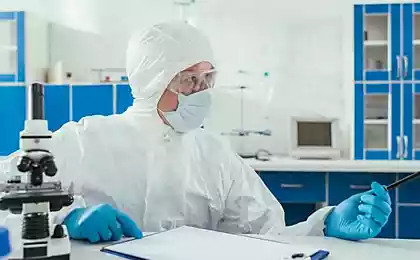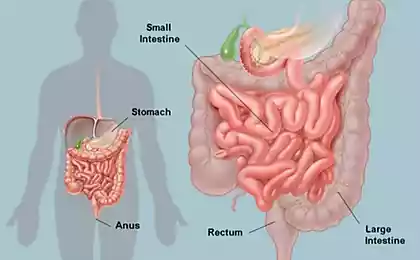208
Dr. Komarovsky explains where people are most likely to become infected with COVID-19
How often do you need to ventilate the room and why is this issue especially relevant now? In his video blog, Dr. Komarovsky answered readers’ questions and shared the most important news about the prevention of coronavirus.

As of November 2020, Evgeny Olegovich has highlighted two news. The contact method of transmission of coronavirus infection was not as common as it was thought in February-March.

Yes, fragments of the virus are found on various objects even after a long time. That's just the probability of causing the disease in them is very, very small. The main way of infection is still airborne.
And here we come to the second news, which makes it much more difficult to control the spread of the epidemic. As it turned out, carriers of the disease are as contagious as possible two days before the onset of its symptoms (this is why it is so important to wear protective masks).

It turns out that the main spreaders of the coronavirus are healthy people. After the first symptoms appear, the number of exhaled viruses decreases sharply. And after 5-6 days, the person is almost not contagious.
According to Komarovsky, there are three factors. The virus itself. A person susceptible to the virus. And the situation in which the person and the virus met. What do you mean?

In order for a person to get sick with COVID-19, a certain number of viruses must get on the mucous membranes of his respiratory tract. Get less - the disease will not, get more - the disease will proceed in a more severe form. This, in particular, explains how hard and long the sick doctors.
In other words, a viral infection is not a two-position switch with the values of “healthy” and “ill.” The likelihood of infection, the course and severity of the disease directly depend on the number of viral particles that enter our body.

GettyImages confirm this view and animal experiments. The most serious condition occurs in those who have been injected with the most virus. Therefore, in order not to get sick or be ill in a mild form, the number of viral particles that enter the body should be as small as possible. How do you do that? Let's figure it out!
Every time we breathe or talk, small drops fly out of our nasopharynx into the air at a distance of up to 1.5 meters. In the case of an infected person, they contain viruses. For infection, one person must exhale these drops, and the other inhale.

GettyImages If it happens outside, small particles quickly dissipate in a large volume of air. Ideal for the virus will be a situation when there are a lot of people, air is scarce and air access from outside is weak.
It's now easy to model places where you can encounter large concentrations of the virus. These are transport, hospital wards with poor ventilation, churches, barracks, concert halls. Wherever many people are close together and there is no proper air exchange.
The humidity of the air also matters. The higher it is, the faster small moisture particles settle on the ground. In dry air, active viruses are preserved as long as possible. What should we pay attention to in light of all this?

As the heating season began, we hid in apartments behind tightly closed plastic windows. At the same time, hot batteries dry the air around the clock. And this is exactly what is required for the rapid spread of the coronavirus.
In short, you need to ventilate the premises as often as possible and increase the humidity in them by all means. It does not hurt to check the serviceability of the ventilation.
The fact that you should wear masks not only in public transport, but also wherever physical distance can be difficult, we do not say. This should be clear to everyone today.

As of November 2020, Evgeny Olegovich has highlighted two news. The contact method of transmission of coronavirus infection was not as common as it was thought in February-March.

Yes, fragments of the virus are found on various objects even after a long time. That's just the probability of causing the disease in them is very, very small. The main way of infection is still airborne.
And here we come to the second news, which makes it much more difficult to control the spread of the epidemic. As it turned out, carriers of the disease are as contagious as possible two days before the onset of its symptoms (this is why it is so important to wear protective masks).

It turns out that the main spreaders of the coronavirus are healthy people. After the first symptoms appear, the number of exhaled viruses decreases sharply. And after 5-6 days, the person is almost not contagious.
According to Komarovsky, there are three factors. The virus itself. A person susceptible to the virus. And the situation in which the person and the virus met. What do you mean?

In order for a person to get sick with COVID-19, a certain number of viruses must get on the mucous membranes of his respiratory tract. Get less - the disease will not, get more - the disease will proceed in a more severe form. This, in particular, explains how hard and long the sick doctors.
In other words, a viral infection is not a two-position switch with the values of “healthy” and “ill.” The likelihood of infection, the course and severity of the disease directly depend on the number of viral particles that enter our body.

GettyImages confirm this view and animal experiments. The most serious condition occurs in those who have been injected with the most virus. Therefore, in order not to get sick or be ill in a mild form, the number of viral particles that enter the body should be as small as possible. How do you do that? Let's figure it out!
Every time we breathe or talk, small drops fly out of our nasopharynx into the air at a distance of up to 1.5 meters. In the case of an infected person, they contain viruses. For infection, one person must exhale these drops, and the other inhale.

GettyImages If it happens outside, small particles quickly dissipate in a large volume of air. Ideal for the virus will be a situation when there are a lot of people, air is scarce and air access from outside is weak.
It's now easy to model places where you can encounter large concentrations of the virus. These are transport, hospital wards with poor ventilation, churches, barracks, concert halls. Wherever many people are close together and there is no proper air exchange.
The humidity of the air also matters. The higher it is, the faster small moisture particles settle on the ground. In dry air, active viruses are preserved as long as possible. What should we pay attention to in light of all this?

As the heating season began, we hid in apartments behind tightly closed plastic windows. At the same time, hot batteries dry the air around the clock. And this is exactly what is required for the rapid spread of the coronavirus.
In short, you need to ventilate the premises as often as possible and increase the humidity in them by all means. It does not hurt to check the serviceability of the ventilation.
The fact that you should wear masks not only in public transport, but also wherever physical distance can be difficult, we do not say. This should be clear to everyone today.
"Fingers" on the festive table to appease the hungry Bull
A sketch about the daughter-in-law, which the whole family does not tolerate.






















